Pedal plates are structural components in bicycle frames that the pedal crank mounts to. Roll forming is an efficient process to manufacture pedal plates from metal coil stock. This guide covers pedal plate roll former types, configurations, workings, customization, suppliers, and more.
Overview of Pedal Plate Roll Forming Machines
- Roll form metal coils into pedal plate shapes
- Continuous process with high production speeds
- Automated punching and cutting integrated
- Short lead times and low costs
- Ideal for smaller bicycle part manufacturers
- Simple operation and quick changeovers
Roll formed pedal plates combine accuracy, speed and flexibility.
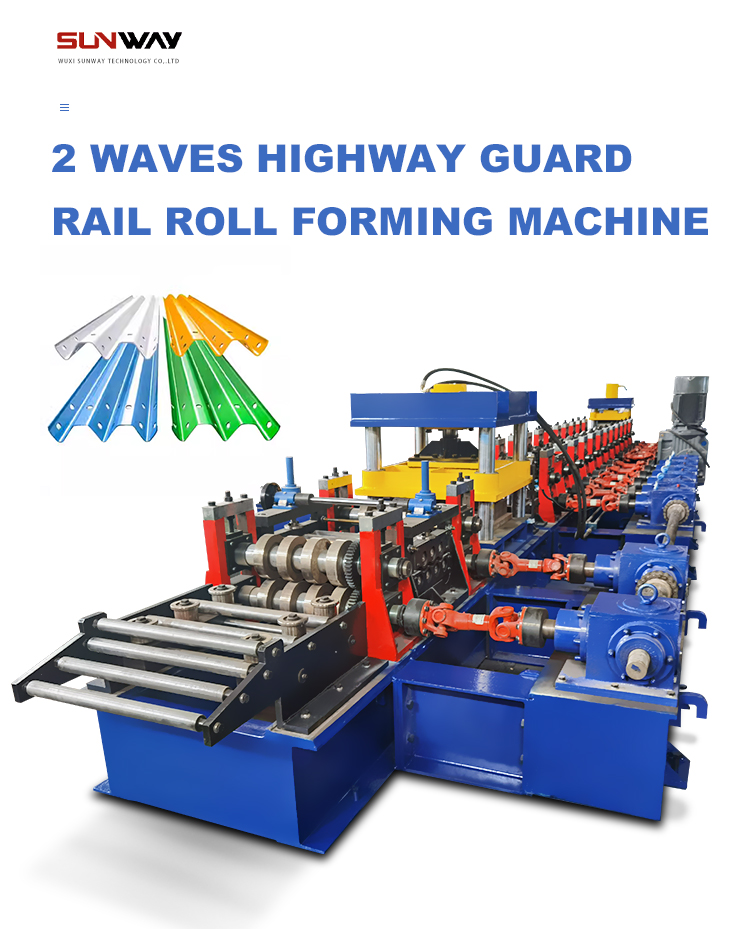
Types of Pedal Plate Roll Forming Machines
Major types of pedal plate roll formers:
- Standard roll formers – Basic models with manual adjustment
- Servo motor roll formers – More advanced with precision control
- All-electric roll formers – Eliminate hydraulics for energy efficiency
- CNC roll forming lines – Fully automated for optimal efficiency
Larger volumes favor servo, electric and CNC controlled machines.
Roll Forming Process Overview
The pedal plate roll forming process consists of:
- Coil Loading – Steel or aluminum coil loaded
- Feeding – Coil fed into roll former infeed
- Punching – Holes punched in plate at early stage
- Forming – Plate formed gradually as it passes through stations
- Cutoff – Formed plate cut from coil at specified length
- Output – Finished pedal plate extracted
The process is continuous and optimized for high output.
Roll Former Components
Key components of a pedal plate roll forming machine:
- Decoiler – Unwinds the metal coil raw material
- Feeder – Feeds metal sheet into first forming roll station
- Punch – Punches holes in part early in process
- Forming stations – Incrementally bend part into shape
- Cutting die – Cuts finished parts from coil
- Conveyor – Catches and conveys finished parts out
- Controls – PLC automates production and parts counter
Design and Customization
- Roll stations designed to form precise plate configurations
- Automated in-line punching for holes
- Quick change tooling allows fast profile switches
- Adjustable to handle different plate widths and lengths
- Optional cambering station to curve plates
- Powder coating integration possible
Proper design matches required plate size and crank fit.
Suppliers and Costs
| Manufacturer | Description | Price Range |
|---|---|---|
| ETG | Wide range of affordable pedal plate roll formers | $3,000 – $15,000 |
| SL Metalform | Servo motor and hydraulic powered models | $5,000 – $25,000 |
| AP&T | Fully electric CNC roll formers for high precision | $15,000 – $50,000 |
| Formtek | Heavy duty pedal plate lines with tight tolerances | $10,000 – $40,000 |
Costs vary based on production speed, automation and accuracy level.
Installation and Operation
- Install per manufacturer instructions on level, stable foundation
- Anchor securely prior to operation
- Verify lubrication, alignments, settings before running
- Gradually ramp up production speeds on initial runs
- Perform routine maintenance for maximum longevity
- Ensure safe operation and follow safety procedures
Proper operation and care maximizes pedal plate roll former performance.
-
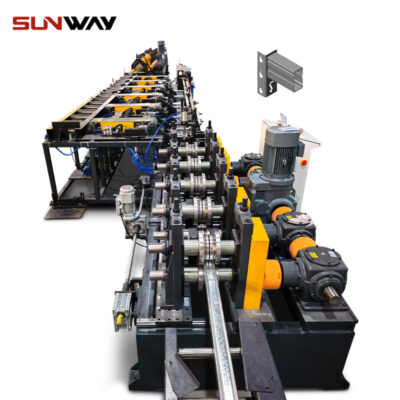 Storage Rack Shelf Box Panel Making Machine Steel Storage Rack System Box Beam Roll Forming Line
Storage Rack Shelf Box Panel Making Machine Steel Storage Rack System Box Beam Roll Forming Line -
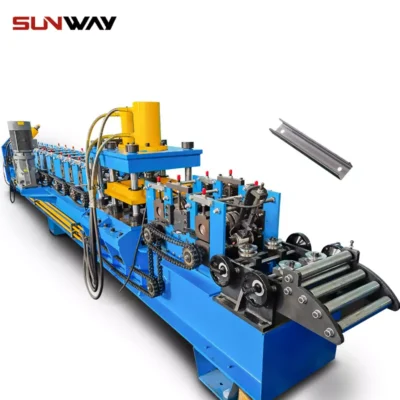 C Section Bracing Omega Storage Rack Upright Post Roll Forming Machine
C Section Bracing Omega Storage Rack Upright Post Roll Forming Machine -
 Steel Box Plate Making Roll Forming Machine
Steel Box Plate Making Roll Forming Machine -
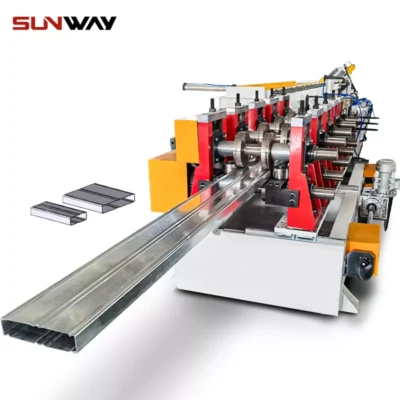 Box Beam Steel Roll Forming Machine For Shelf Column
Box Beam Steel Roll Forming Machine For Shelf Column -
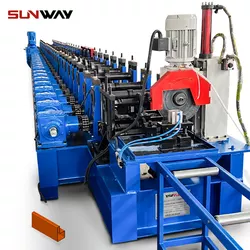 Pallet Racking Step Beam P Beam Roll Forming Machine
Pallet Racking Step Beam P Beam Roll Forming Machine -
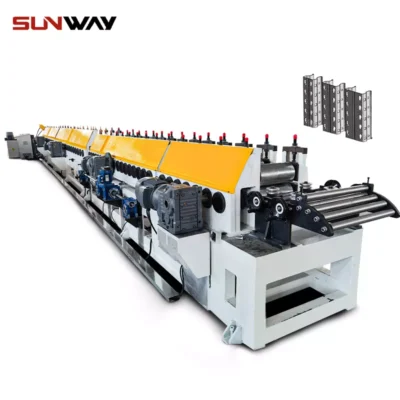 Warehouse Shelf Upright Roll Forming Machine
Warehouse Shelf Upright Roll Forming Machine
Maintenance Recommendations
- Lubricate bearings, chains, gears regularly
- Check alignments of punches, dies, rolls
- Inspect forming rolls for wear and replace
- Verify cutting blade condition and sharpen
- Test PLC system for any faults
- Clean metal surfaces to avoid rust/corrosion
Preventative maintenance reduces unplanned downtime.
How to Select a Roll Forming Machine Supplier
Key factors in choosing a pedal plate roll former supplier:
- Experience with bicycle component manufacturing
- Ability to meet production speed and accuracy requirements
- Offer appropriate levels of automation
- Availability of quick change tooling for flexibility
- Responsiveness to requests for machine customization
- Willingness to modify designs as needed
- Documentation and training provided
- Positive reputation based on client reviews
- Services to assist with installation and maintenance
- Spare parts inventory and supply chain
Thoroughly vet suppliers on these criteria before purchasing.
Pros and Cons of Pedal Plate Roll Forming
| Advantages | Disadvantages |
|---|---|
| High production speeds | Significant initial investment |
| Consistent quality and accuracy | Fixed tooling limits flexibility |
| Lower cost than other processes | More maintenance than simpler methods |
| Automated inline punching and cutting | Floor space requirements |
| Continuous production flow | Limited to thinner gauge metals |
| Minimal secondary processing | Not as easily customized as other methods |
Roll forming excels for medium to high pedal plate production volumes.
Comparison to Other Manufacturing Methods
| Process | Pros | Cons |
|---|---|---|
| Stamping | Very high speed, low per part cost | High initial die costs, lack of flexibility |
| CNC bending | Flexible, easy customization | Slower, higher labor, lower accuracy |
| Roll forming | Efficient for medium to high volumes, fast | Fixed tooling costs, limited customization after |
| Casting | Good for very high volumes, material versatility | Secondary machining required, long lead times |
Each process has optimal applications based on volumes, accuracy needs, lead times and costs.
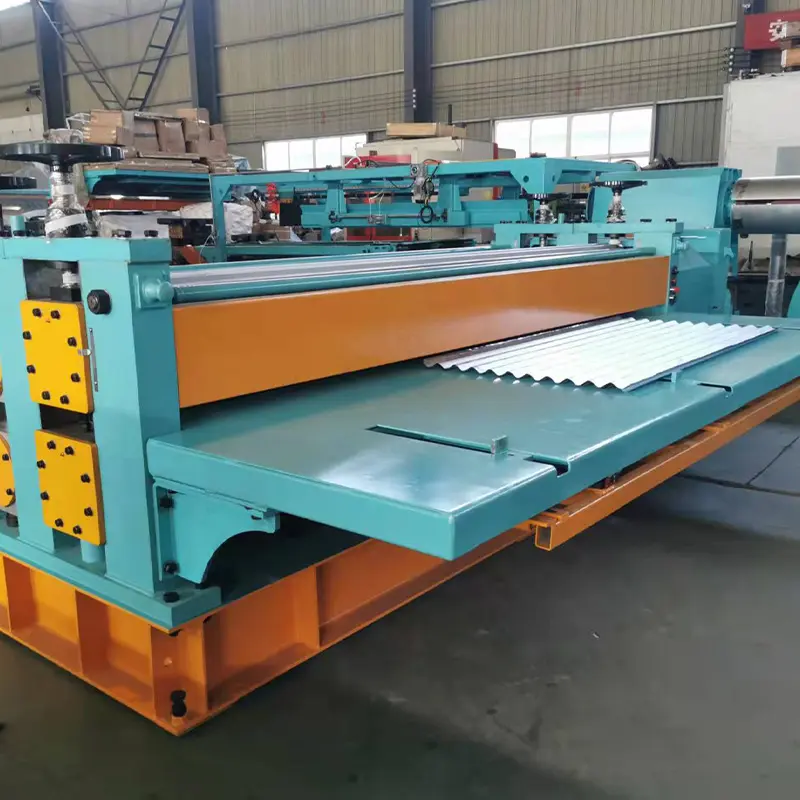
FAQ
What materials can be roll formed into pedal plates?
Most commonly roll formed materials are low carbon steel, stainless steel, and aluminum alloys 6061 and 7075.
What thicknesses can be roll formed?
Pedal plates typically use metal between 1 mm to 3 mm thickness. Thicker materials require more robust roll forming equipment.
How long do pedal plate roll former tooling changes take?
Basic machines require 1-2 hours. With advanced quick change systems, under 15 minutes is possible.
Can pedal plates be powder coated after roll forming?
Yes, powder coating can be done in a batch process or optionally integrated as an inline automated process after roll forming.
What tolerances are held on roll formed pedal plates?
Standard roll forming can achieve +/- 0.5 mm accuracy. Precision CNC machines with servo drives can hold +/- 0.25 mm or better.
Conclusion
Roll forming provides bicycle part manufacturers an efficient automated process to produce quality pedal plates in medium to high volumes. Integrated punching and cutting, quick changeovers, and powder coating integration allow flexibility combined with speed. While requiring an initial investment, over time the automated productivity of pedal plate roll forming results in lower overall part costs and lead times, benefitting OEM customers. Properly utilizing this technology can give manufacturers a competitive advantage in the bicycle component market.
Additional Frequently Asked Questions (FAQ)
1) What coil specs are best for a pedal plate roll forming machine?
Steel: 1.0–3.0 mm low-carbon or stainless; Aluminum: 1.2–3.0 mm (6061/7075). Coil width is typically net blank width + 8–20 mm for edge trim and guiding.
2) How can I minimize twist, camber, and hole-to-edge drift on pedal plates?
Use an entry straightener, symmetric pass design, anti-camber rolls, and servo-guided lateral guides. Add inline vision to verify hole position to ±0.2 mm before cutoff.
3) Are all-electric roll formers worth it for bicycle pedal plates?
For small-to-mid OEMs, all-electric lines cut energy use 10–20% and simplify maintenance (no hydraulics). ROI is strongest with high uptime or when energy tariffs are high.
4) Can I integrate knurling, embossing, or thread forming inline?
Yes. Light emboss/knurling can be added mid-line; thread forming is feasible via pre-punch + downstream tapping cell. Maintain pass clearance to protect surface features.
5) What is a good OEE target for a pedal plate line with quick-change tooling?
Single-profile: 70–80% OEE; multi-profile with cassettes: 55–65%, assuming changeovers in 15–30 minutes and scrap under 1%.
2025 Industry Trends: Pedal Plate Roll Forming Machines
- Electrification and energy recovery: IE4/IE5 motors and regenerative drives reduce kWh/ton by 10–18% versus 2023 baselines.
- Smart QC: Affordable machine vision verifies hole position, slot geometry, and twist in real time, lowering rework for pedal plates with tight crank interface tolerances.
- Rapid changeover: Cassette roll sets and auto-centering entry guides bring changeovers to 10–20 minutes for different pedal plate geometries.
- Sustainable materials: Increased use of recycled aluminum (≥75% recycled content) and EPD reporting requests from bicycle brands.
- Safety and compliance: ISO 13849 PL d/e implementations and improved guarding are standard on new compact lines marketed to bike-component SMEs.
- Data connectivity: Native OPC UA/MQTT for MES/SPC integration, enabling SKU-level traceability and energy dashboards.
2024–2025 Benchmarks for Pedal Plate Lines
| KPI | 2024 Typical | 2025 Best-in-Class | Impact for pedal plate roll forming machine buyers | Source/Notes |
|---|---|---|---|---|
| Line speed (simple plate) | 20–40 m/min | 40–70 m/min | Higher throughput without sacrificing accuracy | OEM datasheets; The Fabricator |
| Changeover time (cassette) | 30–60 min | 10–20 min | Increased SKU agility | SMED programs |
| Dimensional tolerance (±) | 0.5 mm | 0.25–0.35 mm | Better crank fit, less rework | Vision + laser metrology |
| Energy use (kWh/ton) | 90–115 | 75–95 | 10–18% energy savings | IE4/IE5 + regen drives |
| First-pass yield | 96–98% | 98.5–99.5% | Lower scrap on premium plates | Inline SPC/vision |
| OEE (single/multi) | 60–70% / 45–55% | 75–85% / 55–65% | Capacity gain | OEE programs |
References and resources:
- ISO 13849-1 Machine safety: https://www.iso.org
- OSHA Machine Guarding: https://www.osha.gov/etools/machine-guarding
- The Fabricator magazine: https://www.thefabricator.com
- OPC Foundation (OPC UA): https://opcfoundation.org
- Aluminum Association sustainability data: https://www.aluminum.org
Latest Research Cases
Case Study 1: Vision-Guided Punching Improves Hole Accuracy for Pedal Plates (2025)
Background: A mid-size bicycle OEM produced 1.5–2.0 mm stainless pedal plates; rejects were driven by hole-to-crank interface misalignment.
Solution: Added AI vision and laser edge tracking before punching; closed-loop offsets applied to the punch station; recipe-based pass adjustments saved as presets.
Results: Hole position Cpk improved from 1.07 to 1.62; scrap decreased from 2.1% to 0.7%; changeover validation time cut by 35%.
Case Study 2: All-Electric Retrofit Cuts Energy and Oil-Related Downtime (2024)
Background: A supplier using hydraulic lines faced oil leaks and variable punch timing on aluminum 6061 pedal plates.
Solution: Retrofitted all-electric servos on punch and cutoff, IE4 main drives, regenerative braking on decoiler, and OPC UA energy tags to MES.
Results: Energy intensity dropped 14% (from 104 to 89 kWh/ton); unplanned downtime related to hydraulics fell to near zero; first-pass yield rose to 99.1%.
Expert Opinions
- Dr. Stefanie Heringhaus, Head of Forming Technologies, RWTH Aachen
Key viewpoint: “Incremental bending with larger radii and controlled roll gaps is critical for thin stainless pedal plates to avoid edge cracking while maintaining stiffness.”
Source: https://www.wzl.rwth-aachen.de - Mark Bradley, Director of Automation, Bradbury Group
Key viewpoint: “For small bicycle component lines, cassette tooling plus recipe-driven servo axes gives the best ROI—fast changeovers without the cost of a fully bespoke line.”
Source: https://bradburygroup.com - Laura Chen, Senior Manufacturing Engineer, Giant Manufacturing Co.
Key viewpoint: “Inline vision tied to auto-correction turned QC from inspection to prevention; it’s now standard for our pedal plate punching and cutoff.”
Source: https://www.giant-bicycles.com
Practical Tools/Resources
- Standards and safety
- ISO 13849-1 machine safety controls: https://www.iso.org
- OSHA Machine Guarding eTool: https://www.osha.gov/etools/machine-guarding
- Design and materials
- AISI/AISC cold-formed design resources: https://www.buildusingsteel.org
- Aluminum forming guidelines (Alloy 6xxx/7xxx): https://www.aluminum.org
- SSAB forming and AHSS data: https://www.ssab.com
- Controls and analytics
- OPC Foundation (OPC UA): https://opcfoundation.org
- Rockwell FactoryTalk Analytics: https://www.rockwellautomation.com
- Siemens Industrial Edge/WinCC docs: https://support.industry.siemens.com
- Industry insight and costing
- The Fabricator magazine: https://www.thefabricator.com
- MetalForming Magazine: https://www.metalformingmagazine.com
- RSMeans manufacturing cost data: https://www.rsmeans.com
- Representative OEMs for roll forming solutions
- Bradbury Group: https://bradburygroup.com
- Samco Machinery: https://www.samco-machinery.com
- Dallan S.p.A.: https://www.dallan.com
Last updated: 2025-10-22
Changelog: Added 5 FAQs tailored to pedal plate lines; included 2025 trends with KPI table and sources; provided two recent case studies; added expert viewpoints; compiled practical tools/resources with authoritative links
Next review date & triggers: 2026-04-22 or earlier if new safety standards, major OEM feature releases (vision/servo), or energy reporting requirements for bicycle components change
